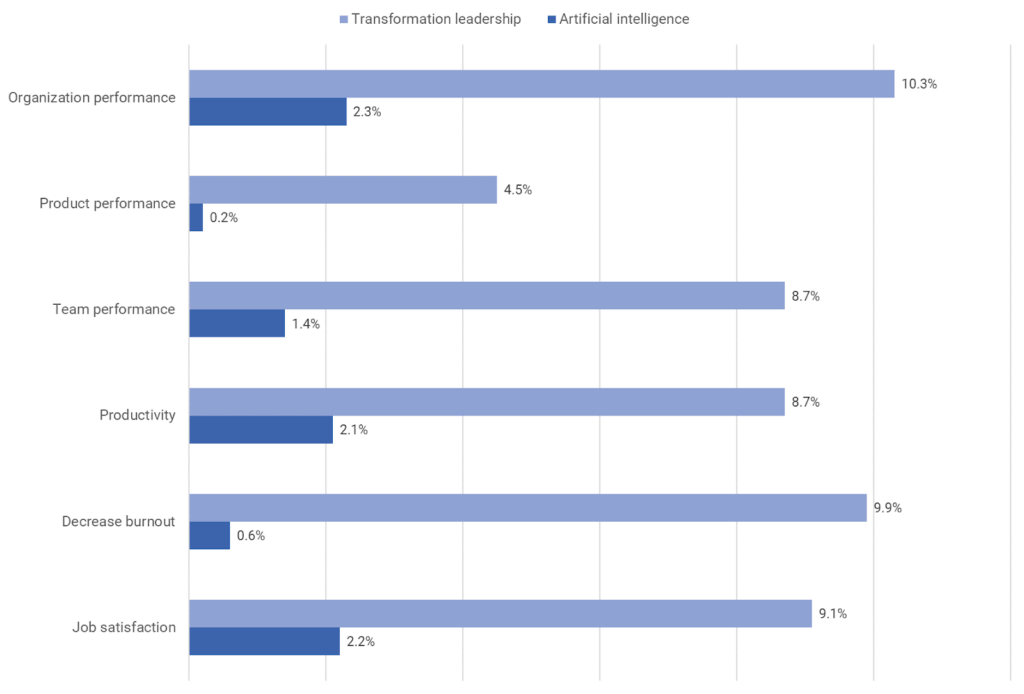Contributed by: Steve Fenton, Octopus Deploy, CDF Member

Since the 2024 Accelerate State of DevOps report arrived, a great deal has been said about the findings for artificial intelligence. While many are expecting a paradigm shift of change thanks to large language models, it seems like AI won’t fix your software delivery problems and it joins platform engineering in failing to meet elevated expectations.
Software delivery is a socio-technical system, and DevOps was, first and foremost, a movement that acknowledged the importance of culture. While the research features many technical practices amongst the capabilities used by successful organizations, it also has many cultural capabilities.
So, this is an excellent time to remember these social, cultural, and leadership aspects of modern software delivery. Capabilities such as transformational leadership.
What is Transformational Leadership?
Transformational leadership is recognized by 5 qualities; vision, inspirational communication, supportive leadership, personal recognition, and intellectual stimulation. It’s a style of leadership that allows people and teams the space to do great work.
Instead of directing teams with lists of tasks, transformational leaders provide the metrics and business intelligence and let the teams work on moving the needle. The incentive structures are designed to encourage teams to collaborate to create value instead of working in silos or aiming for high individual throughput.
- Vision: The leader clearly understands the organization’s direction, how the team contributes, and can articulate both well.
- Inspirational communication: The leader uses positive and uplifting communication that encourages people to treat obstacles as opportunities.
- Supportive leadership: The leader adapts to individual needs and considers how others will feel before they act.
- Personal recognition: The leader recognizes when a team member does a good job or improves the quality of their work.
- Intellectual stimulation: The leader encourages problem-solving and creativity, inspiring the team to continuously improve their work.
The essence of transformational leadership is to provide the information, tools, and environment for the team to thrive. When they know what good looks like, they’ll work out how to get there, improving their work quality and processes.
It All Sounds Squishy
You’d be forgiven for thinking this all sounds squishy. It’s all very well making people more satisfied with their work, but what about the cold hard cash? Well, for some reason, the universe prefers to give success to human-centric organizations.
Whenever you take actions to increase trust, reduce burnout, and improve job satisfaction, you let employees do the kind of work that makes teams perform better, make better things, and increase the likelihood of the organization smashing its goals.
Meanwhile, your recruitment and on-ramp costs drop because people want to work at your organization, so they stay longer and provide more positive recommendations.
Hopefully, you’d want to create an environment where employees enjoy their work without further incentives, but when it comes to culture, the cold, hard cash follows the warm, soft humanity.
Signs of Unhealthy Culture
It may be helpful to list some of the warning signs of an unhealthy culture. These are all things you may spot that suggest adaptation is needed. The ability to change is inherent to the “transformational” part of transformational culture.
- Nobody wants to tell you if a plan or idea is good or bad
- A person raising a problem, issue, or risk is treated badly or ignored
- Interesting new ideas are quickly suppressed
- When something goes wrong, the first question people ask is, “Who’s fault is it?”
- You have people who are the only ones who know some aspect of the business or process
These are all signs of low trust, blame-driven, and low cooperation cultures. Ron Westrum created a helpful typology of cultures that can help you identify problems and understand what a good culture looks like.
Let’s now turn our attention to the impact of transformational leadership on some of the things we care deeply about.
Comparing the Impact of Adoption
It’s hard to ignore all the excitement around AI, which, for a 25% increase, provides modest well-being and performance benefits. If we could generate the same level of energy and urgency for the adoption of transformational leadership, we’d find the benefits far greater.
Now, it’s difficult to assess the effort required to increase the adoption of transformational leadership as opposed to AI. Still, given an increase of 25%, we can see the difference each of these capabilities makes to crucial outcomes.

Transformational leadership gets you a big boost, far bigger than the uplift you get from current AI offerings. Of course, that’s not to say you can’t do both and get all the benefits. The problem comes from deciding to go all-in on AI without consideration for leadership skills. For example, if you aren’t practicing transformational leadership, you’ll be selecting and implementing the tools in the wrong way, which will likely reduce their benefits.
A transformational leader would let the team evaluate the tools and apply them where they are most needed. Sure, you might add guardrails and clarify objectives, but who knows better than the team what problems they can solve to get the most significant gains.
Find Out More

Transformational leadership is something organizations should be bringing far earlier in their journey into modern software delivery. While technical capabilities and tools can be far easier to assess and adopt, their impact is transformed by having the right leadership and culture.
Just as Agile software delivery was a step-change from the heavyweight phased approach to development, I believe we have entered a new era of research-backed software delivery. That’s why so much of my writing references high-quality reports and studies.
You can read more in the 2024 Accelerate State of DevOps Report and my analysis of the CD Foundation’s 2024 State of CI/CD Report, which tracks the developer ecosystem and toolchains.
Happy teams make happy outcomes. Let’s go make it happen.